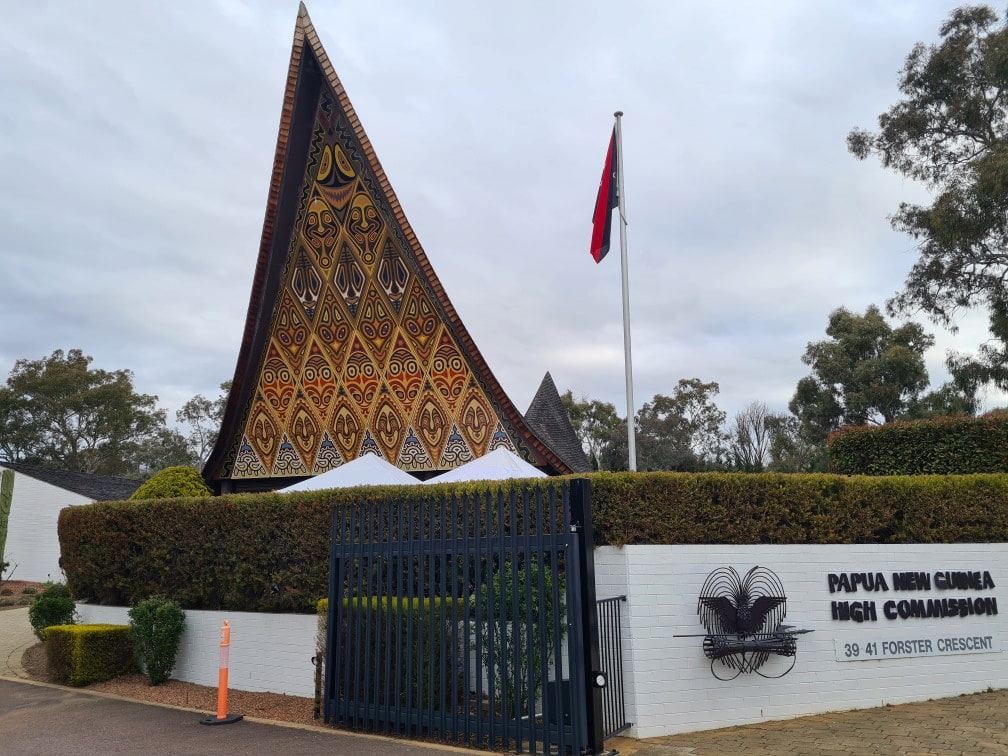We always knew Canberra was special, but few locals know we’re the only capital city in the world to encourage embassies to adopt traditional architectural styles of their country – everywhere else it’s just bricks and mortar.
We take for granted our exotic embassies and high commissions of suburban Yarralumla, Deakin, O’Malley and Curtin – but they’re an anomaly.
Take for example the High Commission of Papua New Guinea, based on the design of a traditional spirit house from the Sepik River. In an urban environment, it stands out with its stylised paintings of clan ancestors and carved totem poles.
In Washington DC, USA, it’s just another beige office block.
The striking Chinese Embassy is straight out of Yixing province (where the roof ties were imported from). It’s hardly your typical suburban lawn with its traditional gardens, ornamental lake, zigzag bridge and rockeries built by craftsmen from Shanghai.
In London, UK, the Chinese Embassy is a nondescript red-brick building.
We even have echoes of the French Foreign Legion in the chancery design of the French Embassy.
If you think Floriade is big, there are 20,000 tulips at the Turkish Embassy, where its windows and pillars resemble arrow shoots and turrets of Ottoman castles.
According to the National Capital Authority, the Australian Government encourages diplomatic missions in Canberra to reflect and celebrate the culture of each nation.
The National Capital Plan includes guidance that diplomatic missions should “represent the finest architectural thought’ of each nation.”
Some key objectives for the diplomatic precinct include ensuring that diplomatic missions establish a distinct character and setting that reflects their national and international significance, as well as adding visual interest and character to the suburb.
The Japanese Embassy resembles a traditional wooden residence with a tea garden, tea house, stream, pond, lanterns, pagodas, and a Kare-sansui (waterless stream) garden.
In Ottawa, Canada, the Japanese Embassy is a plain concrete brutalist structure.
So, who started this architectural trend or origin? The United States of America. It was the first purpose-built embassy in Canberra (the lease was signed the day of the attack on Pearl Harbour).
The grand residence and chancery are built in colonial Georgian style, harking back to Williamsburg, Virginia. Since then, other countries have also embraced their own traditional architecture.
So next time you’re driving around Yarralumla or Deakin, slow down and appreciate the traditional architecture that would otherwise be just another government office building.
What other city outside of Greece boasts classical and Hellenistic columns of Pentelikon marble from the same quarries used by the ancient Athenians?
Where else in the world can you drive 20 minutes for an authentic taste of Malaysia, with its sweeping ‘Minangkabau’ roofs, typical of the Malaysian state of Negri Sembilan, and traditional ‘bunga raya’ flower motifs on the walls?
You don’t need a visa or passport to appreciate the Qasr Al Morabaa Palace (the Square Palace that is the Saudi Arabian Embassy), which was built for King Abdul Aziz Bin Saud, the first monarch and founder of Saudi Arabia.
Fiji’s lovely this time of year, even in chilly Canberra, with its deeply pitched roof reminiscent of Fijian ‘bure’, or traditional wooden houses, usually thatched with pandanus leaves.
Canberra truly is worldly and well-travelled.
Take an exotic trip without the expense: nca.gov.au/attractions/take-tour/diplomatic-missions-self-guided-driving-tour#



